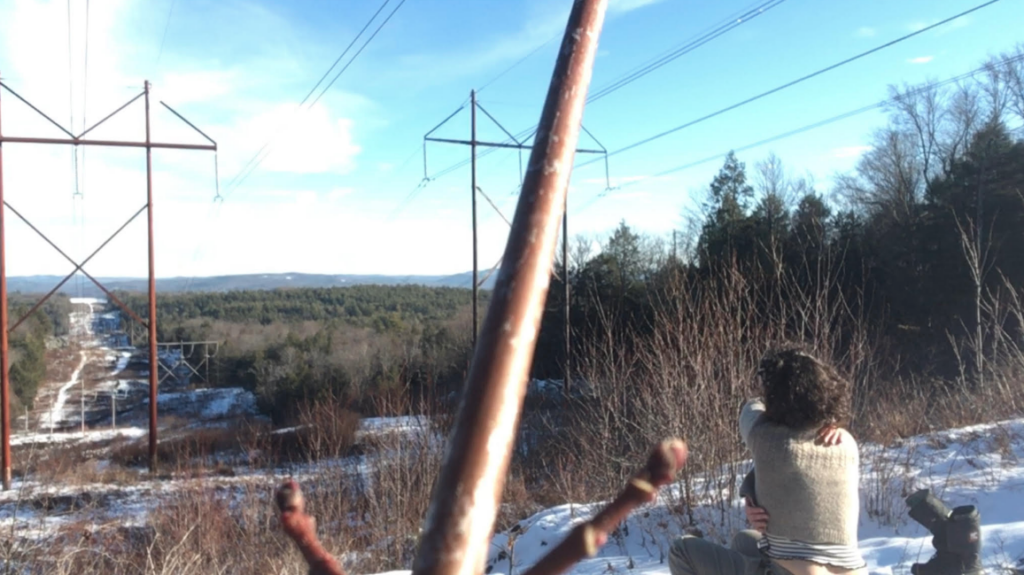A simple gesture pattern came to me as I listened to the sound of howling wind and ice crashing against my yurt recently. I heard thuds and bangs in the distance; likely trees falling in the storm. Anxiety panged in my heart, as I hoped nobody was hurt from the falling trees. Sidling up to me quickly was also the realization that something could crash onto the yurt and possibly damage my home. Life is fragile (it is also resilient, but in these moments I felt the preciousness of it more acutely).
From recognizing pain and sensing an inner desire to wish for wellbeing for all, I started to move as pictured below.
As I merged awareness, intention, and movement, the process began to feel like a ritual. I will note the basic progression of focus that emerged below, in case you are curious to incorporate some aspect of this into your own daily practices or maybe to use it as a warm-up into somatic dance improvisation. This ritual reconnects me to love and yearning for more life; I resonate with these words by Anita Barrows, as quoted by Joanna Macy and Molly Brown in Coming Back to Life: The Updated Guide to the Work that Reconnects:
I would stand
next to you in the forest’s
final hour, in the wind
of the helicopter blades, police
sirens shrieking, the delicate
tremor of light between
leaves for the last
time Oh I would touch with this love each
wounded place
Anita Barrows. “Psalm.” We are the Hunger. Unpublished Manuscript, 1998.

Metta Movement Progression
- Concentrate on the feeling of your hand connecting with your heart, perhaps also with the feeling of the other hand on the lower belly/ “sea of chi” (a phrase from Qi Gong practice). Feel the soles of your feet soften into the ground, knees slightly bent.
- As one of your feet steps in a particular direction, slowly begin to draw the hand away from the heart, in the same outward line as the foot stepped. I particularly resonate with the feeling of letting the back of the hand lead, while the fingertips are still curled in towards myself.
- Ask yourself who or what you are reaching out to. Who do you connect to in this moment? Perhaps you start with what you easily see before you, your environment. Perhaps eventually you reach further to connect with those just beyond your immediate environment, or perhaps ancestors; perhaps loved ones who are far away; perhaps strangers; perhaps those you have a difficult time with; perhaps non-human companions; perhaps various beings and aspects of Nature and Life….see what resonates for you in this moment, or what spontaneously arises
- Focus on the sensation of space that your hand is traversing, feel this bridge between “self” and “other,” how do you feel your own ground but also feel a shift of some sort as you reach towards the “other?”
- As the hand and arm reach their extension, let it begin to flow back towards yourself, perhaps with the heel of the hand drawing in first and letting the fingertips point in the outward direction as long as they can. The foot will draw back in as well. Feel, again, the space you are traversing and how you may be changed from your connection.
- Moving in a counter clockwise circle, take a step just slightly in a new direction and repeat the movement pattern, drawing the foot and hand gently outward from the heart center. With this new change of direction, take in your new perspective of your environment. Contemplate giving and receiving as you move, and the somatic awareness of what your body is like when it gives and when it receives. Feel a sense of flow between the outward reach and the inward return (or notice any lack of flow or tension).
- Continue changing directions slightly with your steps until you’ve completed a full circle. Perhaps you continue shifting your focus of who the “other” is in each moment. Try wishing well towards whatever you are reaching toward. I often internally repeat part of the Metta meditation with each turn of direction. Such as “May you be happy,” or “May you be healthy,” or “May you be free from inner and outer harm,” per one cycle of reaching and coming back.
- Continue for a few rounds, perhaps changing which foot or hand reaches outward. Contemplate your awareness of togetherness and separateness as you continue. Can you still sense your own heart fully even when your hand is fully outstretched?
- Begin to let the form alter in small ways: perhaps changing directions of the circle, perhaps reaching above and below instead of outward, perhaps changing which foot and hand extend. Perhaps you focus your awareness of the back of the heart center rather than the front.
- At some point, give permission for the form to morph even more, morphing organically into other shapes and patterns that emerge in the moment. Follow and observe your mind, heart, sensation, and perceptions as movements morph. How are you still connected to your environment, how can it become more of a duet/trio/etc. than a solo movement exploration?
May your growing care for all beings, especially wounded and marginalized people and places, guide you to take healing and just actions aligned with your values.